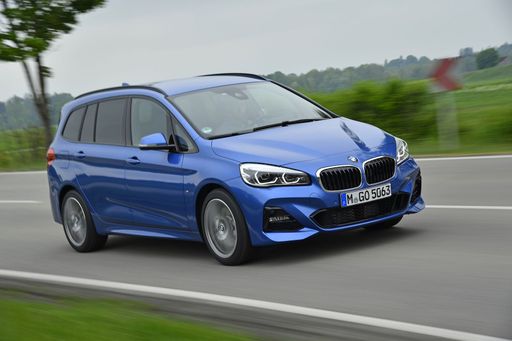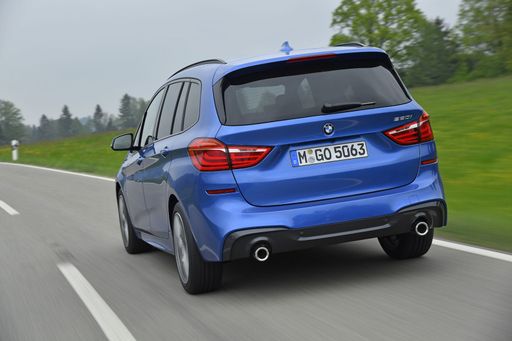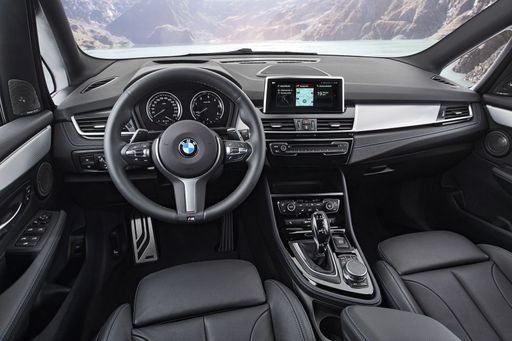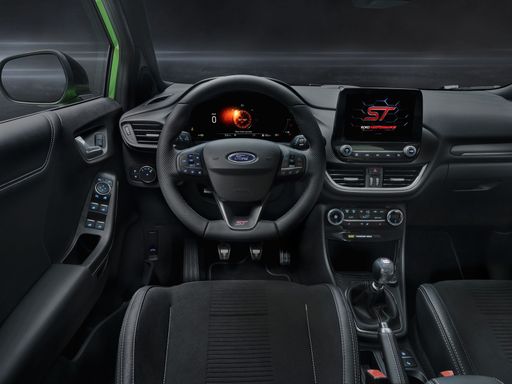BMW 2 Series Active Tourer vs Ford Puma – Performance, range & efficiency compared
Compare performance, boot capacity, efficiency and price at a glance.
Find out which car is the better choice for you – BMW 2 Series Active Tourer or Ford Puma?
Costs and Efficiency: Price and efficiency are key factors when choosing a car – and this is often where the real differences emerge.
Ford Puma has a evident advantage in terms of price – it starts at 24800 £, while the BMW 2 Series Active Tourer costs 31000 £. That’s a price difference of around 6257 £.
Fuel consumption also shows a difference: BMW 2 Series Active Tourer manages with 0.90 L and is therefore significantly more efficient than the Ford Puma with 5.40 L. The difference is about 4.50 L per 100 km.
As for range, the Ford Puma performs significantly better – achieving up to 376 km, about 291 km more than the BMW 2 Series Active Tourer.
Engine and Performance: Power, torque and acceleration say a lot about how a car feels on the road. This is where you see which model delivers more driving dynamics.
When it comes to engine power, the BMW 2 Series Active Tourer has a clearly edge – offering 326 HP compared to 168 HP. That’s roughly 158 HP more horsepower.
In acceleration from 0 to 100 km/h, the BMW 2 Series Active Tourer is evident quicker – completing the sprint in 5.50 s, while the Ford Puma takes 7.40 s. That’s about 1.90 s faster.
In terms of top speed, the BMW 2 Series Active Tourer performs slightly better – reaching 238 km/h, while the Ford Puma tops out at 210 km/h. The difference is around 28 km/h.
There’s also a difference in torque: BMW 2 Series Active Tourer pulls distinct stronger with 477 Nm compared to 290 Nm. That’s about 187 Nm difference.
Space and Everyday Use: Cabin size, boot volume and payload all play a role in everyday practicality. Here, comfort and flexibility make the difference.
Both vehicles offer seating for 5 people.
In curb weight, Ford Puma is to a small extent lighter – 1316 kg compared to 1545 kg. The difference is around 229 kg.
In terms of boot space, the Ford Puma offers slightly more room – 523 L compared to 470 L. That’s a difference of about 53 L.
In maximum load capacity, the BMW 2 Series Active Tourer performs a bit better – up to 1455 L, which is about 172 L more than the Ford Puma.
When it comes to payload, BMW 2 Series Active Tourer slight takes the win – 505 kg compared to 469 kg. That’s a difference of about 36 kg.
Who comes out on top?
Overall, the BMW 2 Series Active Tourer shows itself to be dominates this comparison and secures the title of DriveDuel Champion.
It convinces with the more balanced overall package and proves to be the more versatile choice for everyday use.

BMW 2 Series Active Tourer
BMW 2 Series Active Tourer
The BMW 2 Series Active Tourer offers a blend of versatility and modern design, making it an ideal choice for drivers seeking practicality without compromising on style. Its spacious interior and advanced technology features ensure a comfortable and connected driving experience. With a focus on efficiency and performance, this vehicle stands out as a refined option in the compact MPV segment.
details @ press.bmwgroup.com
@ press.bmwgroup.com
 @ press.bmwgroup.com
@ press.bmwgroup.com
 @ press.bmwgroup.com
@ press.bmwgroup.com
 @ press.bmwgroup.com
@ press.bmwgroup.com
Ford Puma
The Ford Puma presents itself as a stylish compact SUV with a distinctive design that combines practicality with a dynamic driving experience. Its sleek lines and sporty aesthetics make it stand out on the road, while the interior offers a comfortable and tech-savvy environment. With an emphasis on efficiency and a smooth drive, the Ford Puma is well-suited for both urban commutes and countryside adventures.
details @ puma.fordpresskits.com
@ puma.fordpresskits.com
 @ puma.fordpresskits.com
@ puma.fordpresskits.com
 @ puma.fordpresskits.com
@ puma.fordpresskits.com
 @ puma.fordpresskits.com
@ puma.fordpresskits.com

|

|
|
|
|
Costs and Consumption |
|
|---|---|
|
Price
31000 - 48000 £
|
Price
24800 - 36300 £
|
|
Consumption L/100km
0.9 - 6.2 L
|
Consumption L/100km
5.4 - 5.9 L
|
|
Consumption kWh/100km
-
|
Consumption kWh/100km
13.1 - 13.9 kWh
|
|
Electric Range
85 km
|
Electric Range
361 - 376 km
|
|
Battery Capacity
14.20 kWh
|
Battery Capacity
43 kWh
|
|
co2
20 - 140 g/km
|
co2
0 - 135 g/km
|
|
Fuel tank capacity
45 - 54 L
|
Fuel tank capacity
42 L
|
Dimensions and Body |
|
|---|---|
|
Body Type
MPV
|
Body Type
SUV
|
|
Seats
5
|
Seats
5
|
|
Doors
5
|
Doors
5
|
|
Curb weight
1545 - 1920 kg
|
Curb weight
1316 - 1563 kg
|
|
Trunk capacity
406 - 470 L
|
Trunk capacity
456 - 523 L
|
|
Length
4386 mm
|
Length
4186 - 4226 mm
|
|
Width
1824 mm
|
Width
1805 mm
|
|
Height
1576 mm
|
Height
1550 - 1555 mm
|
|
Max trunk capacity
1370 - 1455 L
|
Max trunk capacity
1216 - 1283 L
|
|
Payload
465 - 505 kg
|
Payload
367 - 469 kg
|
Engine and Performance |
|
|---|---|
|
Engine Type
Plugin Hybrid, Petrol, Petrol MHEV, Diesel, Diesel MHEV
|
Engine Type
Electric, Petrol MHEV
|
|
Transmission
Automatic
|
Transmission
Automatic, Manuel
|
|
Transmission Detail
Dual-Clutch Automatic
|
Transmission Detail
Reduction Gearbox, Manual Gearbox, Dual-Clutch Automatic
|
|
Drive Type
All-Wheel Drive, Front-Wheel Drive
|
Drive Type
Front-Wheel Drive
|
|
Power HP
122 - 326 HP
|
Power HP
125 - 168 HP
|
|
Acceleration 0-100km/h
5.5 - 10.3 s
|
Acceleration 0-100km/h
7.4 - 9.8 s
|
|
Max Speed
195 - 238 km/h
|
Max Speed
160 - 210 km/h
|
|
Torque
230 - 477 Nm
|
Torque
170 - 290 Nm
|
|
Number of Cylinders
3 - 4
|
Number of Cylinders
3
|
|
Power kW
90 - 240 kW
|
Power kW
92 - 124 kW
|
|
Engine capacity
1499 - 1998 cm3
|
Engine capacity
999 cm3
|
General |
|
|---|---|
|
Model Year
2024
|
Model Year
2025
|
|
CO2 Efficiency Class
B, E, D
|
CO2 Efficiency Class
A, D
|
|
Brand
BMW
|
Brand
Ford
|
What drive types are available for the BMW 2 Series Active Tourer?
Available configurations include All-Wheel Drive or Front-Wheel Drive.
The prices and data displayed are estimates based on German list prices and may vary by country. This information is not legally binding.
